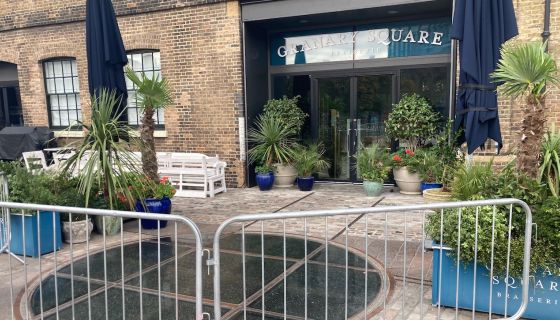Now that the second lockdown is upon us in the UK, closing down theatres, museums, concert halls as well as every aspect of hospitality – in effect squeezing much of the joy out of life – it is an appropriate time to consider its implications for the restaurant industry.
Aside from the huge disruption to staff welfare, staff morale and cash flow, the implications on the surface may not appear that large. Demand responded quickly when restaurants reopened in July and the obvious changes have not been that significant or too damaging.
Certain tables have had to be removed from most establishments to ensure customers are kept two metres apart. Everyone on the staff in most countries must wear a face mask – from the receptionist to anyone working in the kitchen. (I felt terribly sorry for the young Asian I saw cooking at Maison François, which has elegantly taken the place of Green’s in Duke Street, London, who was wearing glasses and a mask, a combination I find extremely annoying to breathe in, let alone to work in in an atmosphere that is steamy anyway.) And, of course, all the beauty has gone out of the design of menus and wine lists. These have now been replaced by QR codes (a challenge for the over-65s!); iPads or paper menus, printed every day, that can be binned at the end of the service.
Until the 10 pm curfew that was imposed by the UK government, which forced restaurants to close just before their most profitable hours, these were the major inconveniences. And compared with the other pleasures of life involved in restaurants these were pretty minor.
Compared with the ballet, the cinema, the opera and with museums in general, restaurateurs have had it relatively easy. They do not have, with only certain exceptions, the massive staff costs that the head of any arts organisation has had to face. It is notable that a number of them have come to rely on the hospitality that they provide as income to supplement their ticket sales, sponsorship and retail operations. I have worked for a number of these organisations over the years and I realise quite how important the hospitality income has been to them – a source of income that until COVID-19 was upon us was considered inviolate.
Nor will many restaurateurs, pace the general managers of the many restaurants now located inside plush hotels, face enormous costs in maintaining their restaurants while they are closed. There will of course be extra costs involved, as the presence of kitchen staff who come in at 8 am and leave at 11 pm is the most effective, and least expensive, method of keeping at bay the rodents that are a regrettable fact of life in many city-centre restaurant kitchens. And presumably no restaurateur will face the challenge encountered by a theatre general manager of our acquaintance who, having been furloughed during the first lockdown, was called back after a month to deal with a very specific challenge: a plague of moths eating the fabric of the theatre – the curtains and the chairs.
Restaurants have the obvious advantage of being relatively easy to reopen. A quick spring clean and the show can go on – a much faster process than reopening an art gallery or a cinema, theatre or museum. And demand re-emerges instantly. From the enthusiastic crowds we saw sitting outside restaurants on a cold evening in central London last Wednesday night, the eve of national lockdown, it is not that difficult to imagine these same people re-emerging on the night of 2 December when we are promised the lockdown will end.
What will the second lockdown herald? I believe there will be two reactions from most restaurateurs.
The first will be one of great relief, that with COVID-19 numbers rising so significantly in recent weeks, the UK government has at least committed itself to some clear and decisive action. Restaurateurs will also breathe a sigh of relief that closure, however painful, will mean that none of their staff will contract this dreadful disease on their clock, and there is no longer a risk of their establishments being implicated in infection. A prerequisite for any successful restaurateur is his or her ability to make decisions quickly, a trait they like to see replicated in others too.
How many will fare in this second lockdown will depend on several factors. Those who benefited the most from the first lockdown were those who were able to adapt, ‘to pivot’ in response to the massive change in circumstances that the first lockdown brought in. Many will have learnt and there will surely be many more takeaway and delivery operations. But many more restaurants clamouring in an already-crowded market means that there is little left over in terms of profitability for any of them. And is a four-week closure too short to make the necessary changes work?
The seasons have changed too. The warm months of last April and May that encouraged people to drop in to restaurants-turned-shops during the first UK lockdown have been replaced by the colder month of November when it is dark at 4 pm. This will obviously affect demand and will probably increase demand for delivery of restaurant meals. Those in a position to do so, and with a brand already established, will benefit. For others, I am less confident.
With any luck restaurateurs will also have the benefit of re-opening in early December to the potential of full houses. It will take much longer for those in the other fields I have mentioned to gear up. I feel terribly sorry for all the young people who have been affected in the restaurant business. But I feel even sorrier for those involved in the arts. They are the biggest losers in the terrible fallout from COVID-19.














